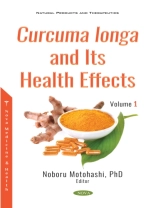Curcumin, a yellow edible pigment in turmeric, has been widely used as a flavor and dye in India and its surrounding countries since ancient times. In particular, among curcumonoids (diarylheptanoids), curcumin I, curcumin II, and curcumin III have been elucidated by many researchers not only in the food area but also in human health effects. Curcumonoids are roughly classified into linear-diarylheptanoids and cyclic-diarylheptanoids. In addition, because there are more glycosides of these two diarylheptanoids, diarylheptanoids form an enormous derivative. Both Chapter 1 and Chapter 2 in volume 1 will be discussed according to the following classification. First, plants containing diarylheptanoids were alphabetically started from the eyes, followed by family, genus, and plant name. Chapter 1, at least 9 orders, 12 families and 27 genera are known to contain plant diarylheptanoids as follows: order Fagales contain the most versatile 3 families 8 genera including family Betulaceae 5 genera (Alnus, Betula, Carpinus, Corylus and Ostrya), family Myricaceae 2 genera (Morella and Myrica), and family Casuarinaceae 1 genus (Casuarina). This is followed by order Zingiberales: 1 family 6 genera (Alpinia, Amomum, Curcuma, Hedychium, Renealmia, and Zingiber) of family Zingiberaceae; order Sapindales: 2 families 3 genera of family Burseraceae 2 genera (Boswellia and Garuga), and family Sapindaceae 1 genus (Acer); order Juglandales: 2 families 4 genera of Juglandaceae 3 genera (Juglans, Platycarya, and Pterocarya) and Rhoipteleaceae 1 genus (Rhoiptelea); order Fabales: 1 family Leguminosae 1 genus (Centrolobium); order Dioscoreales: 1 family Dioscoreaceae 2 genera (Dioscorea and Tacca); order Ericale: 1 family Actinidiaceae 1 genus (Clematoclethra); order Gentiales: 1 family Rubiaceae 1 genus (Pyrostria); and order Santalales: 1 family Santalaceae 1 genus (Viscum), respectively. In Chapter 2, at least 2 orders, 3 families and 3 genera are known to contain seaweed diarylheptanoids as follows: order Alismatales: 2 families 2 genera of family Cymodoceaceae 1 genus (Cymodoceaceae) and family Zosteraceae 1 genus (Zostera); and order Poecilosclerida.1 family Tedaniidae 1 genus (Tedania), respectively. Chapter 3, biological activity of diarylheptanoids were typically described as follows: Leishmanicidal and antiprotozoal activities, antitumor activities, anti-inflammatory effects, and inhibitory on nitric oxide production. Chapter 4, some selective extractions of curcumin was discussed.
Language English ● Format PDF ● Pages 231 ● ISBN 9781536180848 ● Editor Noboru Motohashi ● Publisher Nova Science Publishers, Inc. ● Published 2020 ● Downloadable 3 times ● Currency EUR ● ID 8062093 ● Copy protection Adobe DRM
Requires a DRM capable ebook reader












